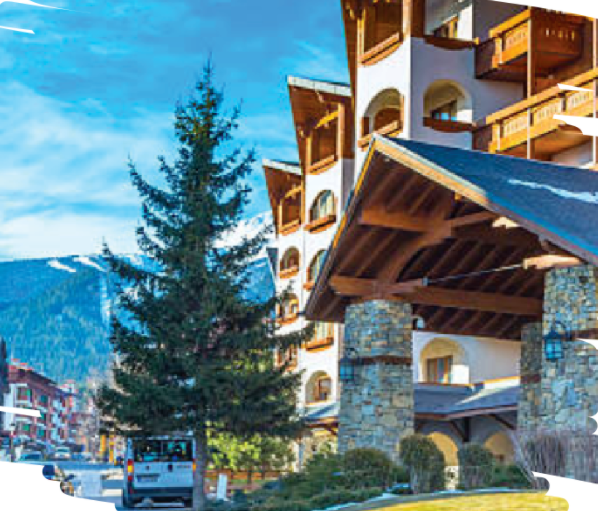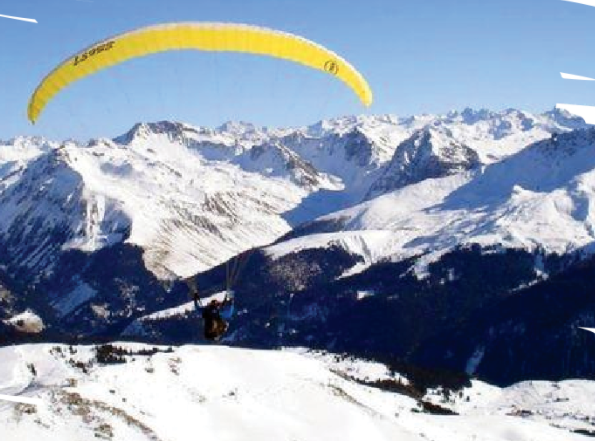Three climatic zones and local features
Among one of the most sought information details about North Pirin is the weather forecast for Bansko. It’s only natural, since the resort is internationally renowned and attracts a large number of visitors during all seasons. So, it’s completely reasonable that tourists should need to check the weather for their vacation in Bansko.

Besides the resort offers numerous opportunities for entertainment and relaxation both in the town area and its surroundings, as well as throughout the mountain – picnics, hikes, excursions, hunting, fishing, mountain biking, rock climbing, rafting and many more.
During the winter, the focus of course is on ski sports, which cannot be practised during a storm, for example. That’s why a great number of people search for the weather forecast not only for Bansko, but for the whole region as well.
As a climatic region, the North Pirin is characterized by trans-continental and Mediterranean features. At the same time, the mountain here has a pronounced alpine character – cut terrain, high hills, steep slopes, deep valleys. This gives the climate some local features at a number of places, so the short-term weather forecast in Bansko and the region should be monitored as well.
The territory of Bansko Municipality is slightly larger than 475 square kilometers. It covers mainly Pirin, part of Razlog valley, an area from the river valley of Mesta and some of its tributaries as well as a part of the Rhodopes.
So the terrain is quite varied. Along the riverbeds it is flat, and it also has a foothill area and a pure mountain area. Thus, the altitude of the municipality varies from 600 meters in the flat parts, up to 2914 meters at Vihren peak – the third highest one in the Balkans after Musala in Rila and Mitikas in Greece. The town of Bansko itself has an altitude of 925 meters.
In general, three zones may be divided in terms of the climate in the region – low-mountain, mid-mountain, and high-mountain. These features should be taken into account when you search for the weather forecast for Bansko – considering the plans you have for the vacation, you should make a search for the respective zone you need.
Cool summer and mild winter
Summarized and averaged data from Bansko weather forecast statistics indicate a cool summer, which is relatively short, and a longer winter, which is soft and very snowy.
Here, the proximity of the Mediterranean with the air masses coming from there has its influence. Mediterranean cyclones form most often during the cold part of the year, invading mainly in December and January. This makes the winter in the region softer. This recurring and predictable feature facilitates the sustainability of the weather forecast for Bansko.

The snow remains for 6 months a year, reaching 2 meters of height. The average annual temperature is 9.1 degrees, of course, during the seasons there are differences between the plain and the mountainous areas.
The cold months are from December to February, with average temperatures in January minus 1,9 degrees. Summer starts in June and lasts for three months, the warmest time being in July and August. Temperatures are usually between 25 and 27 degrees then and are suitable for green schools, excursions or, for example, visiting the International language camp for children LuckyKids in Bansko which includes English language classes.
Summer temperatures for the mid-mountain area are 19-23 degrees and 15-18 degrees in the high-mountain one. At the end of March, the weather becomes more or less stable to warming, but the probability of spring cooling remains until mid-May, which again indicates the need to monitor the short-term weather forecast for Bansko.
In September temperatures fall and cooling is noticeable. According to the weather forecast statistics for Bansko, the average date from which the chilly days start is 24 September. It has happened, however, that they have been “postponed” for 22 October. In any case, autumn, just like spring here, is pretty short.
Minimum 24-hour temperatures are measured before sunrise. In the winter, this is at about 07:00-08:00 AM, in the summer – at about 04:00-05:00 AM. Maximum temperatures are measured about 03:00 PM.
A Rose of Winds
Wind should also be considered when deciding whether to go out into nature. That’s why wind is an important part of the weather forecast for Bansko.

In the winter, winds from the west and northwest are prevalent in the region, with both southern and southwest winds frequenting in mountainous areas. The southern influence comes from the Mediterranean, and in the spring the southern winds frequent in the lower areas, while decreasing in the western ones.
In the summer, Icelandic cyclones become active, and so does the Azores anticyclone, which in turn increases the northwest winds in both low and high altitudes.
Due to the varied relief of Pirin, the winds also have local manifestations in many places, and the combination of different influences forms something like “a rose of winds”.
In the valleys, the local wind follows the river beds, the direction – understandably – being from the slopes to the foothills. Their average speed is about 3 meters per second and they bring coolness in the summer.
The characteristic Füon, which is a warm southern wind with gusts, appears on the northern slopes and also at the foothills of the mountain. It has an average speed of about 13 meters per second but at times it may exceed 20 meters per second.
It blows mainly in the spring, autumn and winter, its peak being in the spring when it causes warming and melting of snow.
